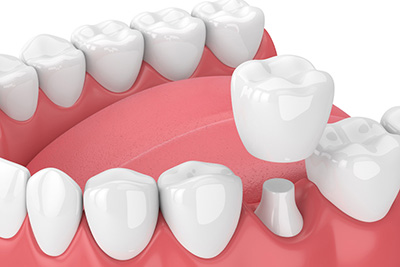Dental Crowns: "Then" and "Now"
Fri, Aug 7th, 2020
When your teeth are damaged, either from injury or tooth decay, your dentist will recommend a procedure to help repair them. Depending on the severity of the damage and other variables, your dentist might say a dental crown is necessary for your tooth/teeth to heal properly. Although it isn't good news when you find out a dental crown is needed. But always remember, it could be MUCH worse. We are very fortunate to have access to state of the art technology that allows these procedures to be quite routine... because it hasn't always been that way.
In this blog, we'll discuss the advancements in dental crown technology along with the benefits associated with them!
How it Started
The concept of dental crowns might sound new, but it's actually far from a modern invention. Dental crowns date all the way back to 200 AD when the Etruscans used gold and other materials as dental crowns. During this time, infections, pain and overall discomfort were almost inevitable. Thankfully, technology has dramatically improved, but the overall idea of dental crowns is nearly 2,000 years old.
The jacket crown was a porcelain crown that was patented in the late 1800s. After some much-needed improvements, it was used from the early 1900s to the 1950s. Although the crown was effective, it's longevity was compromised due to microcracking that occurred during the cooling phase of fabrication, which caused issues to the crown, tooth and gums.
Modern Dental Crowns
Fast forward to modern-day dental crowns, they have a life span of 15 years or more (depending on how well you take care of it), the procedure is virtually painless, infections are nearly nonexistent and microcracking is a thing of the past.
There are several types of dental crowns available, such as porcelain, gold or solid zirconia. Although all of the aforementioned materials offer attractive and durable solutions, porcelain is by far the most popular option. Porcelain dental crowns are highly durable and custom-made to match the shape, size and color or your natural teeth. But don't confuse porcelain crowns from the early 1900s with modern-day porcelain crowns, today's dental crowns are durable and much more comfortable.
Benefits of Dental Crowns
- Dental crowns are a common and simple procedure. Your dentist will shape the tooth so that it can securely hold a crown. Next, your dentist will create a mold of your tooth for the crown to be cast. The dental crown is made in a laboratory and will only take about two weeks. You will be given a temporary one in the meantime. When the crown is ready, your dentist will secure it over your prepared tooth with a strong bond.
- Dental crowns relieve pain from damaged teeth. They are often used to complete restorative treatments, repairing damage to a tooth’s enamel or structure and even to take the place of a missing tooth. A dental crown can protect a tooth against further damage while also reducing sensitivity.
- Dental crowns can restore the appearance of your teeth. Since they fit securely over an existing tooth, they are your solution to discoloration, staining, chips, cracks, etc.
- Dental crowns are custom-made for you. Once the surrounding area of the tooth heals, most people forget they even have one.
- As we mentioned above, with proper care, dental crowns can last 15 years or more. For this to happen, daily brushing and flossing is a must, and dental visits every six months need to be a priority.
Arnold Dentistry
Our goal at Arnold Dentistry is to provide a comfortable experience for all of our patients. Thanks to the advancements in dental technology, dental crown procedures have become safer than ever. If you're experiencing any oral discomfort, give us a call and schedule your appointment today.
(813) 689-1529
Source: Lee Trevino Dental






